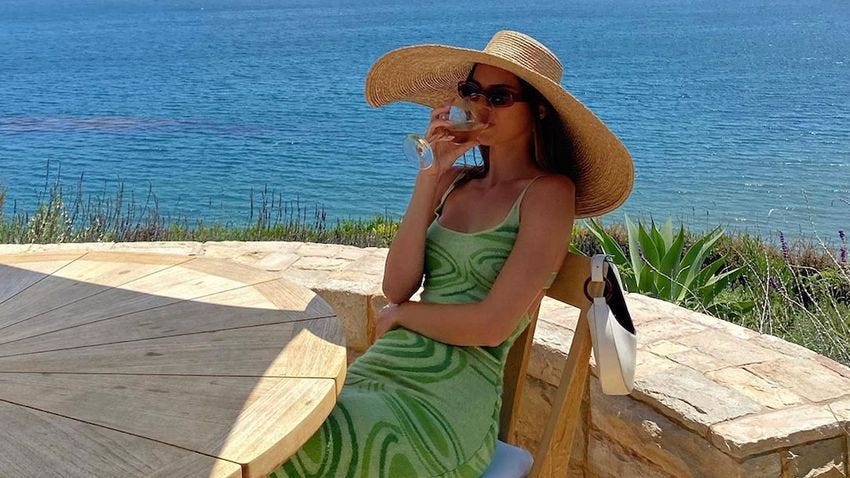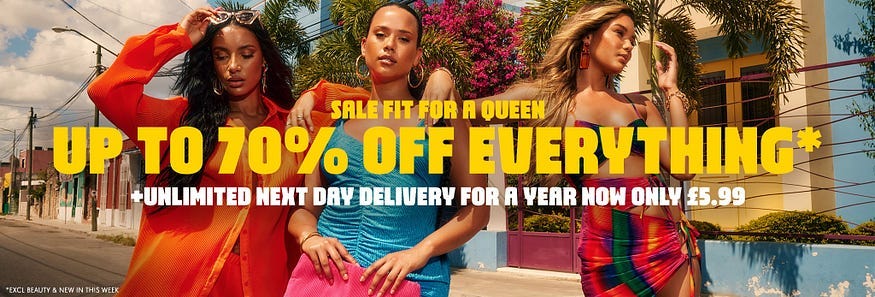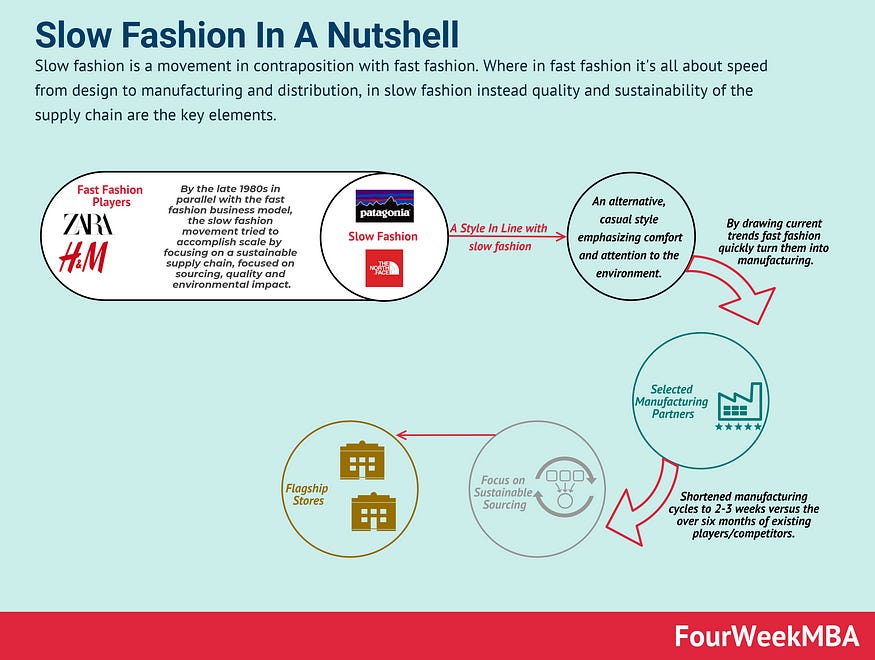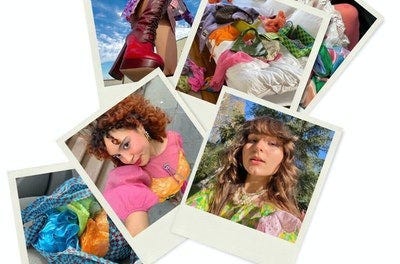Fast Fashion Is Costing Everything for Nearly Nothing
In this article, Gitanjali discusses the dangers of fast fashion and what that means in today's time. Originally published in Medium.
Overconsumption in the fashion industry is an issue that has been discussed majorly over the past few years, especially with the advent of TikTok growing in popularity. The trend of making large Shein haul videos for quick clicks has raised the question of whether fast fashion is worth the societal and ecological damage it causes.
Trend cycles are growing smaller with clothing going out of fashion after a few weeks rather than seasonally. The overproduction of clothing is driven by advancements in industrialization and the exploitation of garment workers in certain areas in Asia. Further, fast fashion can cause severe ecological effects such as an increase in carbon emissions and higher waste generation.
“A typical trend-cycle can be broken down into five parts: introduction, rise, acceptance, decline, and obsolescence. Said cycle used to last 20 to 30 years, she said. Now, the same five-step process is spinning faster than ever, nearing a speed that’s out of control.”
— Mandy Lee, trend forecaster, on Input Magazine
The accessibility of purchasing clothing makes it harder for people to resist temptation and give in to microtrends. Microtrends are short-lived trends that gain a lot of attention in a short amount of time in comparison to traditional trend cycles that change seasonally. These trends are forgotten as quickly as they came into relevance.
Further, fast fashion brands are known to sell knock-offs of more expensive designer pieces (like the one pictured below) which quickens the trend cycle as the more popular a piece of clothing becomes, the less fashionable it is as it is deemed overdone and cliche. This contributes to the issue of waste generation as many buy certain clothing pieces only for them to be considered unfashionable by the time their order arrives at their door.

These trends are cultivated by social media, specifically TikTok as fashion content creators post videos of their excessive hauls. Content creators that post hauls are usually those who have lots of disposable incomes that could have gone to more sustainable brands. Hauls and lookbook videos convince people to buy more clothes to achieve a certain look, rather than encouraging people to use what they have on hand. The lack of education on the topic, especially by fashion content creators, creates more pressure for those who want to be perceived as stylish but feel as though the only way they can is through overconsumption.
Another example of this is the Vivienne Westwood pearl choker called the ‘Mini Bas Relief Choker’ which began to gain traction as celebrities were seen wearing it. Fast-fashion brands then would create imitations of the product that would be sold for a smaller percentage of the price of the original, making it more accessible for the local fashionable girl. As more people wear it, the less unique the piece becomes, the more “basic” the look becomes.
The term ‘basic’ can be defined in two ways. According to social media slang, it refers to someone who is unoriginal, unexceptional and mainstream. On the other hand, fashion insiders consider basics as a silhouette or colour of a fashion piece that can be paired with everything. It is a staple in one’s closet that will stand the test of time and will not go out of style. In today’s society, it is rare for microtrends to evolve to be considered basic pieces.

Shein is the epitome of alleged unethicality in fast fashion. From instances of art theft to enabling the spike in landfill production, Shein has a reputation that never fails to take centre stage for the topic of fast fashion, especially now that it is known to be the forefather of ultra-fast fashion. In more recent news, Shein was reported to be valued at $100bn, with 10,000 new products a day. Only 6% of their inventory lasts for over 90 days. Not much is known of the business practices, though the company has failed to disclose its working standards to the UK government and there are false claims on its website in regards to their factories’ certifications. Despite this, Shein has been deemed the fashion giant of the decade because of its large success.
On a similar note, Pretty Little Thing has made headlines over the past two years due to the massive mark-down of prices during Black Friday sales. In late 2020 and 2021, their Pink Friday sale was heavily discussed due to the 99% and 100% mark-down respectively. The owner of the brand faced criticism in the year 2020 due to allegedly paying employees less than 3.50 pounds, or 333 rupees an hour and forcing staff to continue working even after testing positive for COVID-19. The trend of “next day delivery”, though convenient has also caused controversy due to the environmental implications.
Though the discussion of fast fashion can be quite bleak, numerous social media content creators strive to raise awareness of the dangers of fast fashion and the unethical practices it causes in a way that is optimistic and inspirational. The Buyerarchy of Needs, based on Maslow’s Hierarchy of Needs, provides an easy way to picture how sustainable each of us can be when it comes to fashion.
The highest level on the Buyerarchy of Needs is ‘Buy’ involves the celebration of sustainable brands, which are brands that typically follow the slow-fashion business model.
“It encompasses awareness and approach to fashion that considers the processes and resources required to make clothing. It advocates for buying better-quality garments that will last longer, and values fair treatment of people, animals, and the planet along the way.”
— Madeleine Hill on the topic of slow fashion
Further, some traits of a sustainable brand include transparency in marketing, the use of natural fabrics, recycled fabrics, and minimal dye processes. They tend to sell clothes that are better made and of higher quality, making them last longer.
To encourage positivity in one’s approach toward sustainable fashion, Jazmine Rogers or thatcurlytop on Instagram started a page called Sustainable Baddie. She states in an interview with Nylon Magazine that she wants to make an impact on the fashion industry by showing that you do not have to compromise sustainability with being fashionable. On the Instagram page, she highlights a “sustainable baddie of the week”, allowing for smaller content creators that have the same ethos to gain recognition.
“Sustainable Baddie is a place for fun and optimistic content surrounding imperfect sustainable fashion and living. It provides hope and refuge for the climate anxious through creativity and style while providing sustainable lifestyle advice through diverse voices.”
— According to the website
By following pages that highlight the importance of climate consciousness, especially now with the climate crisis worsening, we can remain hopeful and educated on how we can do our part every day. For more inspiration, here is an article I’ve written on my favourite fashion influencers who reminds you to develop your style, rather than give into microtrends. Tan France has also done a Masterclass on finding your personal style that can aid in your journey towards sustainability.





